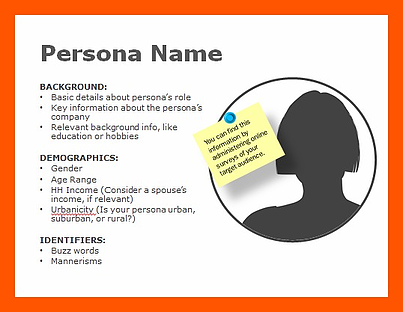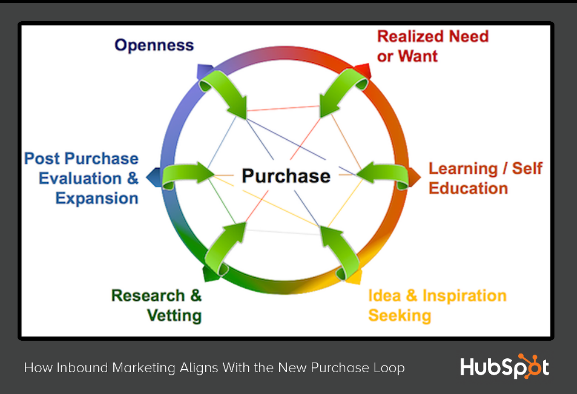Why Lead Intelligence Will Make You Question Everything
 Lead intelligence reminds me of Spy vs. Spy. Maybe that’s because the word “intelligence” is in there, like CIA and FBI. OK, FBI is really the Federal Bureau of Investigation, but they work the same. What do you think? I have read that lead intelligence is a form of data mining, the purpose being to capture vital information about your prospect thereby giving your team the best shot at making the sale. The act of asking questions about your lead is an important part of your local inbound marketing strategy.
Lead intelligence reminds me of Spy vs. Spy. Maybe that’s because the word “intelligence” is in there, like CIA and FBI. OK, FBI is really the Federal Bureau of Investigation, but they work the same. What do you think? I have read that lead intelligence is a form of data mining, the purpose being to capture vital information about your prospect thereby giving your team the best shot at making the sale. The act of asking questions about your lead is an important part of your local inbound marketing strategy.
So what are the phases of gleaning lead intelligence?
Patrick Murphy in 3 Phases of Lead Intelligence from August 2012 states that the three broad phases of lead intelligence are:
1. On-site Lead Intelligence
While a potential client is browsing your website, they’re also sharing valuable lead intelligence. By gathering information on what pages a prospect visits and what resources they access, you can give your sales team a real head start in turning that lead into a sale. As long as your calls to action and on site information do their job, your prospect will actually create this valuable lead intelligence for you.
2. Shared Lead Intelligence
Your prospects will also willingly share some very specific lead intelligence before they leave the site. Through contact forms, your prospect will give you their basic details. What information these forms call for is up to you, so ensure they call for the most valuable lead intelligence information for your sales team.
Obviously the more information you get, the better. But it’s important to strike a balance between required information and the size of the form. You don’t want to scare off a prospect by asking too much. Some lead intelligence is better than nothing.
3. Post-Visit Lead Intelligence
The lead intelligence shared on a contact form can be just a starting point in building a picture of the prospect. Finding prospects’ Twitter or LinkedIn profiles can help build even more lead intelligence. It can give your sales team a platform to start an informal conversation too.
The third phase is the one in which data is actively mined by your business. By looking up the social media sites the prospect is active on it is possible to learn a great deal more about the prospect than what you get when they fill out your call-to-action. By going this route you avoid asking too many questions directly and scaring the lead so much that he or she decides not to complete the action. However, you must realize that doing this due diligence is a labor intensive project.

Let’s go to what Patrick called shared lead intelligence and consider what questions to ask on your form that will not send the lead running for the hills. I am going to take the suggestions of Hubspot’s Pamela Vaughan from her article 10 Data Points You Need to Convert More Customer from 2011. Yes, that is a way back; but some things never change, and learning about your leads by what they share on a form is and always has been part of your inbound marketing strategy.
Next I want to give you a caveat or two. You do not need to ask for all of these on a form. Only pick the ones that apply to your business. For example, if as a B2C you sell insurance to individuals, you won’t have any need for information about the lead’s company size or job title. If, on the other hand, you are a B2B insurance company that sells to businesses, you will need to ask more of these questions.
A second caveat is that you always ask for the person’s email address. Pamela assumes that you know this.
10 Must-Have Pieces of Lead Intelligence You Need for Effective Lead Nurturing
1. Name: This sounds like a no-brainer, but you'd be surprised how few marketers personalize their communications with something as simple as the lead's name. This is one of the simplest pieces of intelligence to gather from your leads, so why not use it? Addressing your leads with their names in lead nurturing emails is a great first step to a more personalized experience.
2. Demographic Information: Gathering and analyzing demographic information such as age, gender, and location can give you a lot of insight into your leads' wants and needs and can help you better qualify them up front. Do you sell products tailored to a more senior demographic? Then you probably don't want to bother adding a rogue teeny-bopper lead to your lead nurturing campaign for those products.
3. Industry: If you're a B2B company and you sell products and services to people in various industries, industry information can be extraordinarily helpful in determining the best nurture path. Do leads from that particular industry have specific needs and care about only certain products and services you offer? Plop these leads into lead nurturing campaigns that offer vertical content and information related only to the industry in which they work.
4. Company Size: A small business has much different needs and goals than does an enterprise-sized business, so shouldn't leads falling in these two different categories -- and in between, for that matter -- be nurtured differently, too?
5. Job Title: A lead's job title can tell you a lot about them. In which department do they work? What is their level of seniority within the company? After all, you'd likely market to a company's CEO much differently than you would a junior manager at the company.
 Wait, I hear you saying, that’s not 10; it’s only 5. Yes, you are right, but from number 6 on, Pamela talks about what to do with the information you have received, doing what Patrick called post-visit lead intelligence. This information is for both B2B and B2C operations. The 6th item Pamela mentions concerns Persona.
Wait, I hear you saying, that’s not 10; it’s only 5. Yes, you are right, but from number 6 on, Pamela talks about what to do with the information you have received, doing what Patrick called post-visit lead intelligence. This information is for both B2B and B2C operations. The 6th item Pamela mentions concerns Persona.
For instance, does the lead intelligence you gathered fit a persona you have defined in your inbound marketing strategy? I trust that you have more than one persona. The next question is are there certain groups of leads that seem to fit into a particular content format or topic over another. Knowing this information you can adjust your content to fit the majority of interest.
The 7th lead intelligence item Pamela talks about is Pages Visited. You should already have the ability to analyze this information. The question to ask is which of the pages has a particular lead visited. If a lead likes case studies, that person might be closer to a sale than one who looks at a blog article for a minute or so and decides to get a little more information and fills out a form for something general. Then the lead moves on.
Why don’t we let Pamela tell us about 8-10. This information applies to any business, B2B and B2C:
8. Social Media Intel: Is this lead present on social media sites such as Facebook, Twitter, and LinkedIn? What kind of information can you gather from their interactions on these sites? Based on their discussions and questions, do they seem to be interested in a particular problem your business solves? Nurture them with content that addresses those problems.
9. Conversion Forms Completed, and When: How much has the lead already interacted with your business' lead gen content? How many forms has he/she completed, what type of content (ebooks, webinars, product demos, etc.) were they for, and which topics did the content cover? If the lead has converted on a few forms for content on a specific topic, nurture them with more of that type of content. When did the lead first convert on your site? How long has he/she been around? A lead who has converted more is likely more educated about your company and what you offer than a new lead who has only converted once.
10. Email Communications History: How much have you emailed the lead already? Are they already a part of one email list or lead nurturing campaign? Historically, how engaged have they been with your email communcations. Did they click any links? What links did they click on? Use your intelligence wisely, and be sure not to bombard leads with multiple campaigns and various types of email sends. It's called lead nurturing, not lead pummeling.
Does this give you a pretty good idea of where that person is in the buying cycle? It certainly does. You can use this lead intelligence data to tweak what you are doing. You can use this valuable lead intelligence to determine which persona that a lead is helping you personalize your interactions with each lead. Using lead generation as a part of you inbound marketing strategy will result in more sales-ready leads.
How much lead intelligence have you done?
 Jaco Grobbelaar is the owner of BroadVision Marketing. BroadVision Marketing works with business owners to put in place inbound and outbound marketing strategies that consistently secure new clients. The BroadVision Marketing Training Center is located in Petaluma, CA and primarily serves companies in the San Francisco Bay area.
Jaco Grobbelaar is the owner of BroadVision Marketing. BroadVision Marketing works with business owners to put in place inbound and outbound marketing strategies that consistently secure new clients. The BroadVision Marketing Training Center is located in Petaluma, CA and primarily serves companies in the San Francisco Bay area.
Jaco can be reached at jaco@broadvisionmarketing.com or 707.766.9778 or connect with Jaco on Facebook - www.facebook.com/broadvisionmarketing - and LinkedIn - www.linkedin.com/in/JacoGrobbelaar.
You May Also Like
These Related Stories

7 Internet Marketing Tips on Lead Intelligence

Nurturing Your Lead While Juggling All the Advice



No Comments Yet
Let us know what you think